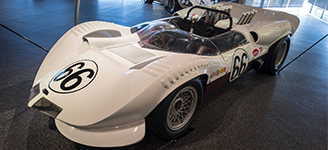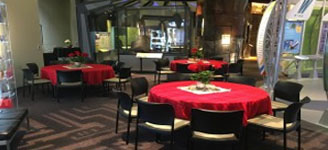More About Tom Lovell
Tom Lovell was born in New York City in 1909. He developed an early interest in the American Indian. As a youth, he and his mother visited the New York Museum of Natural History where he sketched Native American weapons, clothing and artifacts. In 1931 he graduated from Syracuse University with a Bachelor of Fine Arts degree. While at Syracuse Lovell began illustrating for “Pulp” magazines, earning $6 a drawing and $60 a cover.
At Syracuse Lovell met his future wife, Cloyd Simmons, a fellow art student and sometime model. They married in 1934. During the Great Depression, Lovell illustrated for “The Shadow” magazine, “Wild West Weekly” and others. He then turned to the “Slick” magazines such as Colliers and Cosmopolitan, and he illustrated manuscripts for writer Edna Ferber, Sinclair Lewis and others.
Tom Lovell was beyond draft age when World War II began; however, he and other artists joined the Marine Corps in 1944 to become combat artists. Lovell and his artist friend, John Clymer, were sent to Washington, D.C. where they were assigned to illustrate Marine publications — “Leatherneck Magazine” and the Marine Corps Gazette – and to do a series of large paintings on Marine Corps history that now hang in the Marine headquarter in Washington. Following the war, Lovell did a series of assignments for National Geographic magazine, Life magazine and The Church of Jesus Christ of Latter Day Saints.
In Spring 1969, Lovell’s life changed when the late George T. Abell and Gladys Hanger Abell, commissioned him to do a series of historical paintings. These would cover the magnificent chain of events and people in the Permian Basin. They would eventually become the core of exhibits in the proposed Permian Basin Petroleum Museum Library and Hall of Fame. After a trip to Midland, Texas, and a meeting with the Abell’s, Lovell agreed to do four paintings for the Abell-Hanger Foundation. During the next four years, the list of subjects grew and eventually 14 paintings were completed by the artist.
In 1995, Tom Lovell said the paintings he did for the Foundation were “some of the most important commissions in (his) life.” He credited Abell with his knowledge of history of his subjects “…from the very start, he (Abell) was the guide, he named the subjects. We had differences of opinions and educated one another.” The two had countless meetings, exchanged hundreds of letters and together visited sites under consideration. Lovell was dependent on Abell’s technical knowledge of drilling; Abell was dependent on Lovell’s deep knowledge of people, history and art. “We were a good team,” the artist commented.
Tom Lovell was elected Academician National Cowboy Hall of Fame, 1973; elected member, Cowboy Artists of America, 1975. Numerous other awards include Prix de West, Gold Medal, 1974 and Prix de West, Gold Medal 1986, National Cowboy Hall of Fame; Cowboys Artists Silver Medal for oil, 1975; Cowboy Hall of Fame Gold Medal for oil, 1976; Franklin Mint Gold Medal, 1974; and many others. His paintings in permanent collections include the Cowboy Hall of Fame, U.S. Marine Corps Headquarters, U. S. Capitol Armed Forces Committee Room; New Britain Museum, Connecticut; National Geographic Society, Washington, D.C.. One of his most widely recognized paintings is that of the Revolutionary soldier used as the trademark of Continental Insurance Company.
Tom Lovell and his daughter, Deborah, were killed in an automobile accident in Santa Fe, New Mexico on June 29, 1997.
(B.J. Orbeck, 1997)




